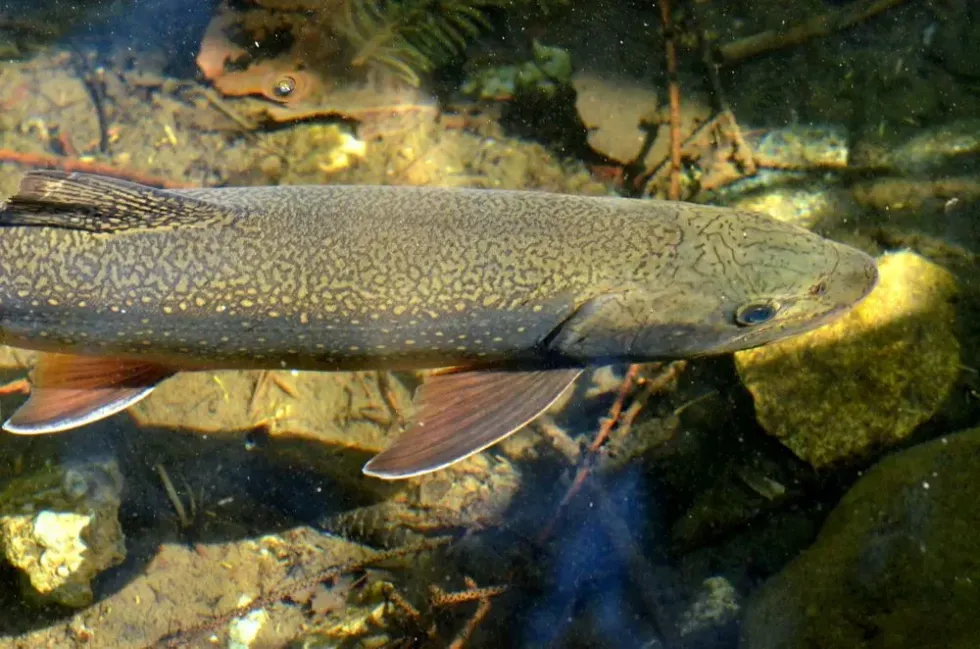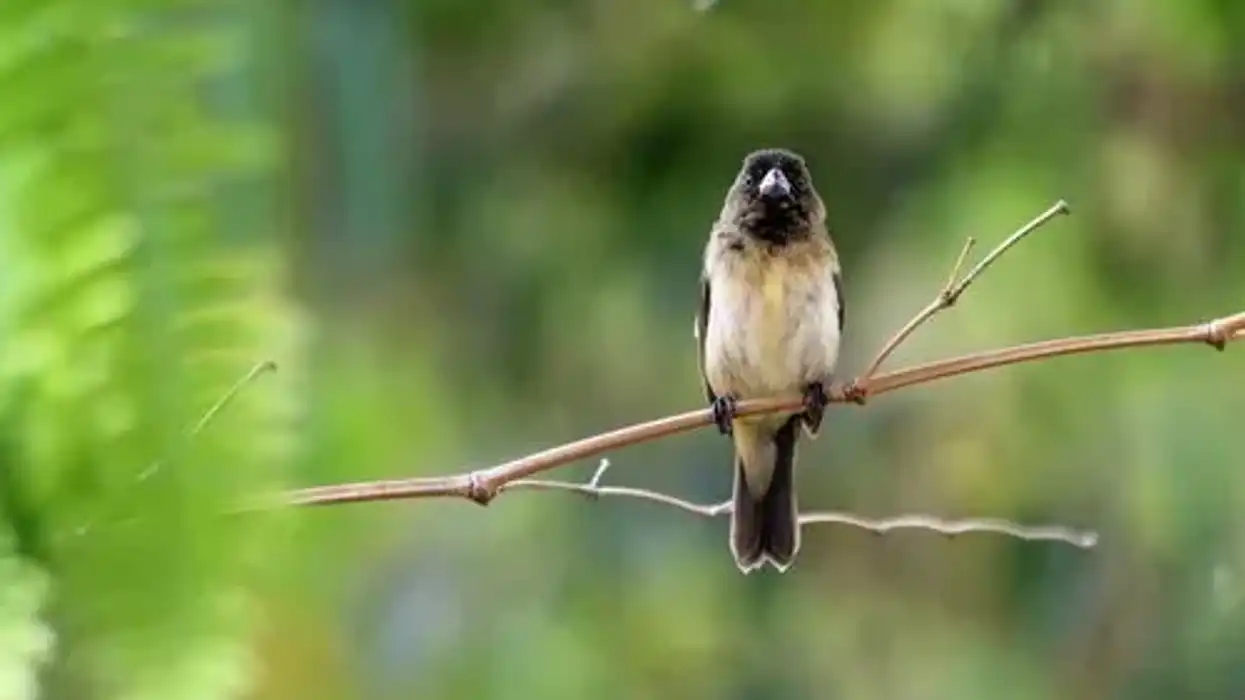Have you ever heard of a hybrid fish? No?
Then you have landed at the right destination to take you through some fascinating Splake fish facts! Hybridization is particularly a hot topic for debate. Some argue it gives bonus points for sustaining and others counter it with the destruction of original species.
One such species that could be a moderating bridge between the two arguments is the crossbreed of a Brook trout and Lake trout. The Splake, or as its scientifically called Salvelinus namaycush x Salvelinus fontinalis, possesses features from both its parents' Salvelinus namaycush (Lake trout) and Salvelinus fontinalis (Brook trout).
These Splake trout are found in freshwater habitats, and the trick for Splake identification during fishing is to keep a watch for their slight forky tail. This is their unique body feature.
Splakes are extensively popular for ice fishing as well! What is significant about the Splake is that it is capable of creating quality fisheries where other hatchery species have not been successful, doesn't that count as a brownie point for any hybrid?
Keep reading for more such surreal Splake insights! Before you leave, do not forget to catch up on our articles about cichlids and Pacific salmon.
Splake Interesting Facts
What type of animal is a splake?
Splake is a hybrid formed from two fish species. Its parent species are male Lake trout and female Lake trout.
What class of animal does a splake belong to?
The Splake trout are hybrids that essentially belong to the class of fish or, as scientifically known, Actinopterygii.
How many splakes are there in the world?
The Splake fish does not naturally reproduce due to their poor spawning success rate, and thus, the fishery managers control their number. These species are surprisingly unusual for hybrids as they can be fertile, but their behavioral nature in the external environment prohibits them from reproducing. This number is quite low across the world.
Where does a splake live?
The Splake is a hybrid kind of fish found in water bodies such as lakes and rivers. This hybrid trout species can also be sought in the deep waters of some great lakes in North America, specifically in Ontario as well as Canada.
What is a splake's habitat?
A Splake is best suited for cold lakes and ponds; in fact, they tend to swim in cold water and are therefore found in small water bodies. Apart from the cold water, they also are accustomed to living in moving water since they run up or down creeks and rivers.
As their name suggests, Splake is a half Lake trout, and thus they are also found in lakes.
Who do Splakes live with?
The Splakes live on their own in their group of fish. They are also often found with their other parent half, the Brook trout.
How long does a splake live?
These hybrid trout are stocked in conjunction with a Brook trout in small water bodies such as ponds, and the lifespan of such stocked fish ranges up to 20 years.
How do they reproduce?
Splake or otherwise known as sport fish, are not capable of reproducing. Although theoretically, the hybrid is fertile, due to behavioral reasons, outside the hatchery environment, the Splake typically does not reproduce. They are thus produced by crossing the female Brook trout with the male Brook trout.
What is their conservation status?
As both the parent species of Splake are classified as Not Extinct, the conservation status of Splake is Not Extinct as well.
Splake Fun Facts
What do splakes look like?
If you'd go fishing in a freshwater body, then be sure to check for these pointers for Splake trout identification so you know just how exactly they look like and can catch them easily! They are slightly deep-bodied fish.
They also have light spots on a dark background, while some tend to have red spots. The slightly forked tail is the characteristic feature of Splake. Its overall growth is considerably higher than the parent fishes.

*Please note that this is an image of a Brook trout, one of the parents of the Splake. If you have a royalty-free image of a Splake, do get in touch!
How cute are they?
Splakes are hybrids with seasonal colors on their skin rivaling even the northern lights! You could say their visual appearance and large size make them inclined more towards alluring than being cute.
How do they communicate?
Like any other fish species, the Splake communicates electrical impulses in water and smell.
How big is a splake?
This Lake trout outperforms its parents in terms of its growth rates. Its length increases up to 18 in just after it is cross-bred and grows up to a super impressive size of 28 in. To better visualize, you could compare its size to be 10 times bigger than a normal fish!
How fast can a splake swim?
The Splake being 75% similar to the female Lake trout has the speed of its female parent, i.e. 3-4 mph.
How much does a splake weigh?
Most Splake fish don't grow as large as the Lake trout, but they do grow larger than the Brook trout and thus weigh a few pounds. However, the ones in bigger waters weigh in the range of 8-12 lb. You'd be surprised to know that the Splake has cracked a record-breaking weight of 20 lb 11 oz!
What are the male and female names of the species?
There are no specific names for male and female species of Splake as the name Splake itself is a hybrid between Speckled trout (another name for Brook trout) and Lake trout.
What would you call a baby splake?
The baby version of a Splake trout, although small in size, is still called a Splake.
What do they eat?
Splakes are essentially meat eaters that consume other fish. In the initial stages, they are given a standard starter diet in the hatchery, and later they feed on aquatic animals with backbones.
Are they dangerous?
No, this hybrid of a Brook trout and a Lake trout is seemingly a popular fishing choice, so it is not dangerous from a human's perspective.
Would they make a good pet?
Unfortunately, the Splake would fail to be your adorable pet because of its enormous size! Don't you think it would be impractical to have a large cupboard-size tank to house one fish?
Did you know...
The Splake came into existence in the 1870s.
While catching them, you are likely to get confused between them and a Brook trout since they usually live together, but one way to resolve the Splake vs Brook trout identification conflict is to watch out for their tails. The Brook trout do not possess the fork or square tail characteristic that the Splake does.
Come to think of it, Splake vs Lake trout identification equally becomes an important question if you ever want to catch a Splake in freshwater bodies, so the answer to that again lies in the forky tails of Splake, so look out for the tails!
Splake is a delight for fish eaters due to its hybrid vigor. Smoked, fried, baked, or grilled, they are cooked in all variations to satisfy the sophisticated taste buds of many, but for that, you've got to catch it, right?
It's simple, catch them in shallow water just after ice-out using light tackle or flies. The effective baits you can use to catch would include small minnows, earthworms, jigs, spoons, and spinners.
The Colorado lakes house many Splakes, such as in Rotella Park Pondo, Troutman Park, Warren Park Pondo, and Dowdy Lake. The depth in which the Splakes can be found in these lakes ranges from 20-50 ft.
What is the geographic range of Splake?
The Splake, also called Brookinaw, is generally found in North America, Canada, and Alaska. However, domestication by humans has led their geographic range to extend to the United States and South America, New Zealand, and Sweden.
What is the largest splake caught on record?
A 30.5 Splake was caught by a man named Buckely Jolley at Joes' Valley reservoir, and the DWR certified the fish to be the largest ever Splake to be caught! Unbelievable, isn't it?
Here at Kidadl, we have carefully created lots of interesting family-friendly animal facts for everyone to discover! Learn more about some other fish including red Oscars or neon tetra.
You can even occupy yourself at home by drawing one on our Splake coloring pages.










